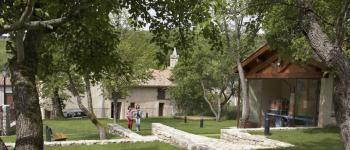
In the heart of the Montagne Noire, north-west of Carcassonne, the castle of Saissac spreads out its terraces in front of an exceptional landscape blocked on the horizon by the Pyrenees chain.
The castle appears verbatim in 960: it is bequeathed by the bishop of Toulouse to the count of Carcassonne who, from the 11th century on, infers it to powerful vassals.
On the eve of the crusade against the Albigensians, the place belongs to Bertrand de Saissac, appointed in 1194 as tutor to the young Raymond Roger Trencavel, heir to the viscount of Carcassonne.
Bertrand de Saissac is known in particular for his intervention in the election of the prior of Alet: he did not hesitate to dig up the former abbot and put him back on the throne to impose the election of one of his friends.
In 1209, the lords of Saissac submitted to the Crusaders and were temporarily stripped of their possessions in favor of Bouchard de Marly and then, after 1234, Lambert de Thurey.
From this period on, the seigniory of Saissac remained divided between several co-lords: part of it was returned by Louis IX to the "faidits" lords of Saissac.
Thereafter, Saissac passed from hand to hand.
It is in this historical context that the "Treasure of Saissac" must be attached.
Indeed, in 1979, work on the town brought to light a treasure of about 2000 deniers dated from 1250-1270.
Almost all the coins emanating from the royal authority thus attest to the control of the central Capetian administration over the Languedoc region.
Partially ruined in the mid-18th century, the monument was gradually abandoned.
It is moreover degraded by treasure seekers in 1862.
The monetary treasury of Saissac
In the central main building, two restored rooms host the museography on the monetary treasury of Saissac.
Discovered in 1979, these 2,000 deniers dated from the 1270s constitute the most important royal treasure buried in the Languedoc region.
Almost all the coins are stamped with the seal of Saint Louis, attesting to the control of the central administration of the Kings of France over the Languedoc region.
In the first part of the room, showcases display various forms of treasure: childhood treasures, public treasure, treasure of words, ...
At the back of the upper room, the historical fiction "The Treasure of Saissac" (20 minutes) is projected on the big screen. In the lower room, the Treasure of Saissac is highlighted at the heart of a modern and lively museography.
Pedagogical panels present everything related to money: the extraction of ore, minting (craftsmen and tools), exchange, the importance of money in commercial exchanges and conflicts, but also the historical context of the appearance in Languedoc of the royal currency in the second half of the 13th century, ...
In addition, more playful modules allow to appreciate the value of the treasure of Saissac by its equivalence with the cost of living at the time.
As a souvenir, you will be able to strike your Saissac Treasure token.
Castle of Saissac
11310 Saissac
Tel/fax: 04 68 24 46 01
Translated with www.DeepL.com/Translator
(free version)




